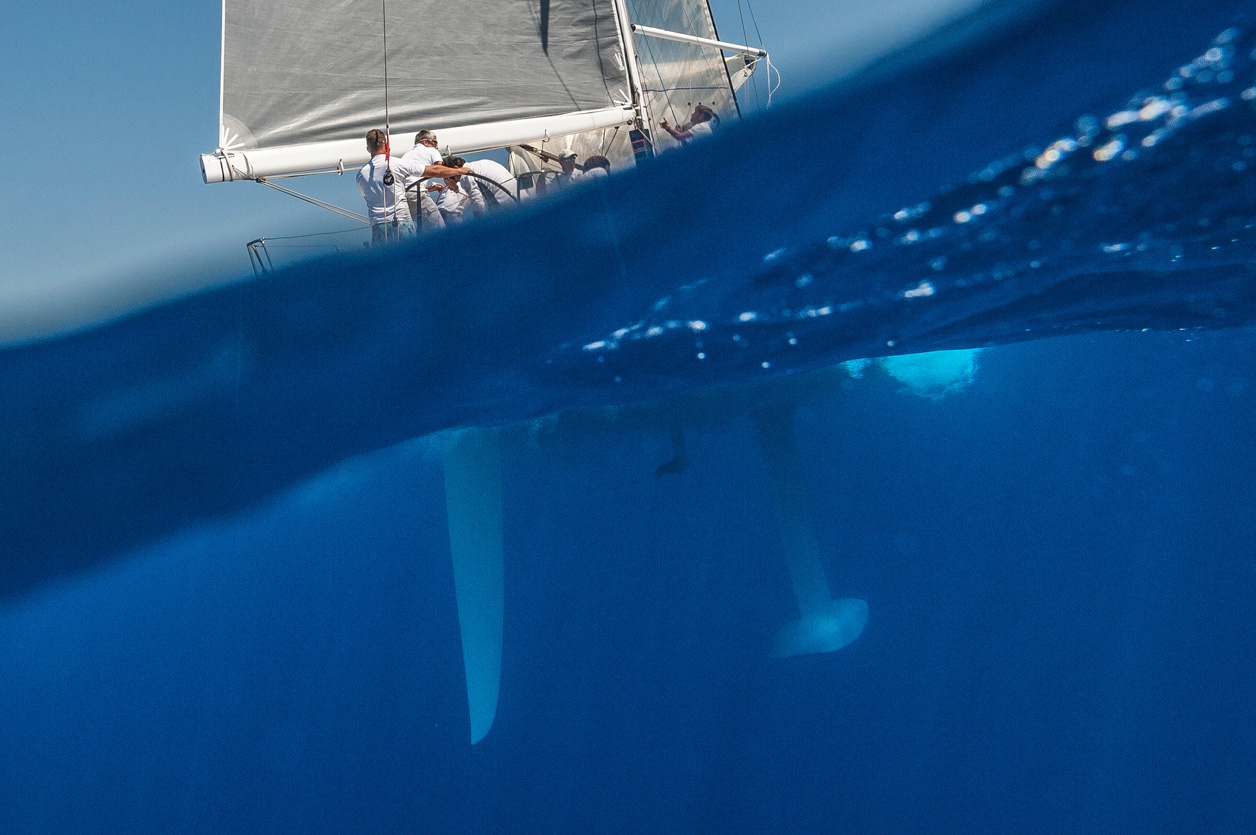Your essential guide to yacht keel types
08 July 2025

A keel on a yacht is an important part of a yacht’s structure and helps vessels to sail efficiently and remain stable. There are many different types of boat keels which provide similar benefits, but each has its own unique set of advantages and disadvantages.
The type of keel you need depends on a variety of factors, including the size of your vessel, where you’ll be sailing, and what you’ll be using it for – such as, leisure trips or racing. With this in mind, it’s important to understand how each type of boat keel affects performance.
In this guide, we’ll define what a boat keel is and look at whether keel size matters. We’ll also highlight different types of keels and discuss some of the pros and cons of each type.
What is a keel of a boat?
A boat keel is a structural feature located on the bottom of a sailboat’s hull. Keels have many important functions. They provide stability by lowering the boat’s centre of gravity, helping to prevent capsizing in strong winds or rough seas. Typically made using dense materials, boat keels extend down into the water and act as a counterbalance to the force of wind on the sails.
In addition to stability, keels help boats to sail efficiently. They reduce sideways drift (leeway) by providing resistance in the water. This allows the boat to maintain a straighter course and sail closer to the wind.
Depending on the design of the boat, keels come in various shapes and sizes, such as fin keels, full keels, and bilge keels. Some modern boats feature retractable or swing keels for efficiently navigating shallow waters.
Does yacht keel size matter?
The size of a yacht’s keel matters as it directly affects the boat’s performance, stability, and handling. A larger, deeper keel typically offers greater stability by lowering the yacht’s centre of gravity which helps it to resist heeling (tilting) under wind pressure and reduces the risk of capsizing. It also provides more resistance against sideways drift, allowing the yacht to sail closer to the wind with improved control.
However, larger keels come with disadvantages. Deep keels limit access to shallow waters and may make docking or navigating coastal areas more difficult. They also add weight and can slightly reduce speed due to increased drag. A smaller, shallower keel improves manoeuvrability in shallow waters and may reduce drag in light wind conditions. However, they offer reduced stability and less effective upwind performance.
The ideal keel size depends on how you plan to use your yacht. Racing yachts are typically more efficient with deep, narrow keels for speed and upwind performance. Cruising yachts, on the other hand, may use shorter, broader keels or lifting keels for flexibility and access to shallow waters.
What are the different types of keels?
As mentioned, there are several boat keel types that could be the best option for your yacht. Here, we share some of the most common types and how they affect performance.
Full keel
A full keel runs along the entire length of a yacht and is typically part of the hull’s design rather than being bolted on.
Full keels are exceptionally durable and resilient, offer good directional stability, and help yachts to sail smoothly in rough weather and water conditions. While they come with numerous benefits, disadvantages of full keels include their restricted manoeuvrability and the fact that they typically slow yachts down when compared to other keel types. They also make reversing a challenge.
Fin keel
Fin keels are perhaps the most common type of keel and look like an airplane wing or a fish fin. Attached to the hull, these keels are fairly narrow, deep, and help yachts to sail more efficiently.
Fin keels can be susceptible to grounding and offer less stability than full keels. However, they enable yachts to move faster and offer great upwind performance. There are a couple of fin keel options to look out for. Bulb keels which have a central weight that helps to stabilise them, and wing keels which have wing-like extensions that improve stability and reduce draft.
Bilge keel
Bilge keels, also known as twin keels (as there are two of them), sit on each side of the hull and have a shallower draft than fin keels despite looking similar. This makes them ideal for those who sail in shallow waters. A bilge keel enables a yacht to stand up unsupported when the tide goes out and offers great stability. Bilge keels can be less efficient, slower, and have reduced upwind performance than fin keels which may make them unsuitable if you like fast sailing.
Lifting or swing keel
Lifting and swing keels are retractable keels that can be taken into the boat when sailing through shallow waters to reduce draft. Lifting keels can be completely raised into the boat while swing keels are partially swung into the boat. While this keel type is useful when navigating coastal waters, it can be harder to maintain and is more susceptible to damage than fixed options. You may also find that you lose interior space when the keel has been retracted.
Daggerboard or centreboard keel
Often found on smaller boats, a daggerboard or centreboard keel is raised up through a slot in the hull. When retracted, a daggerboard sits within a dedicated space at the centre of the hull, whereas a centreboard can be set at different angles. As with lifting and swing keels, daggerboard and centreboard keels can require additional maintenance and aren’t as durable as full and fin keels. However, they boast reduced drag and make it easier to sail in shallow waters.
Specialist yacht insurance through GJW Direct
No matter the type of yacht you have, specialist yacht insurance through GJW Direct can give you peace of mind should anything happen to it. Get an instant online quote today.
Please note the information provided on this page should not be taken as advice and has been written as a matter of opinion. For more on insurance cover and policy wording, see our homepage.
Got a question? Call our UK call centre 0151 473 8000
©Copyright Ripe Thinking Limited 2026. GJWDirect® is a registered trademark and a trading name of Ripe Insurance Services Limited which is Authorised and Regulated by the Financial Conduct Authority No.313411.
Registered office: One Stockport Exchange, Railway Road, Stockport, United Kingdom, SK1 3SW. Registered in England No. 04507332.
